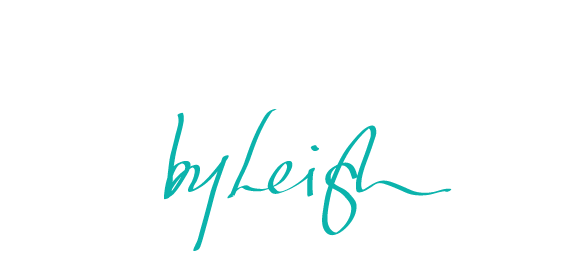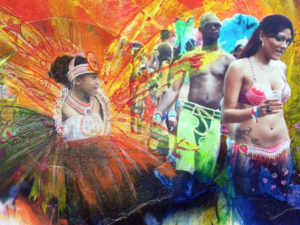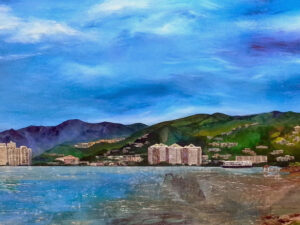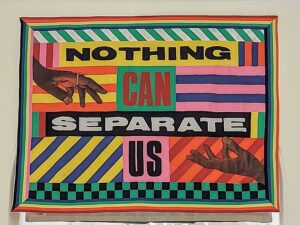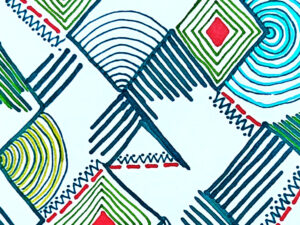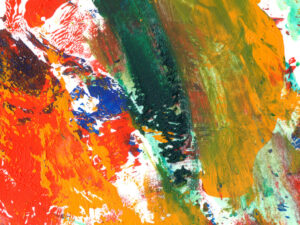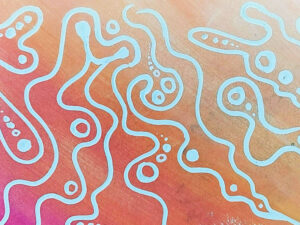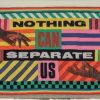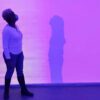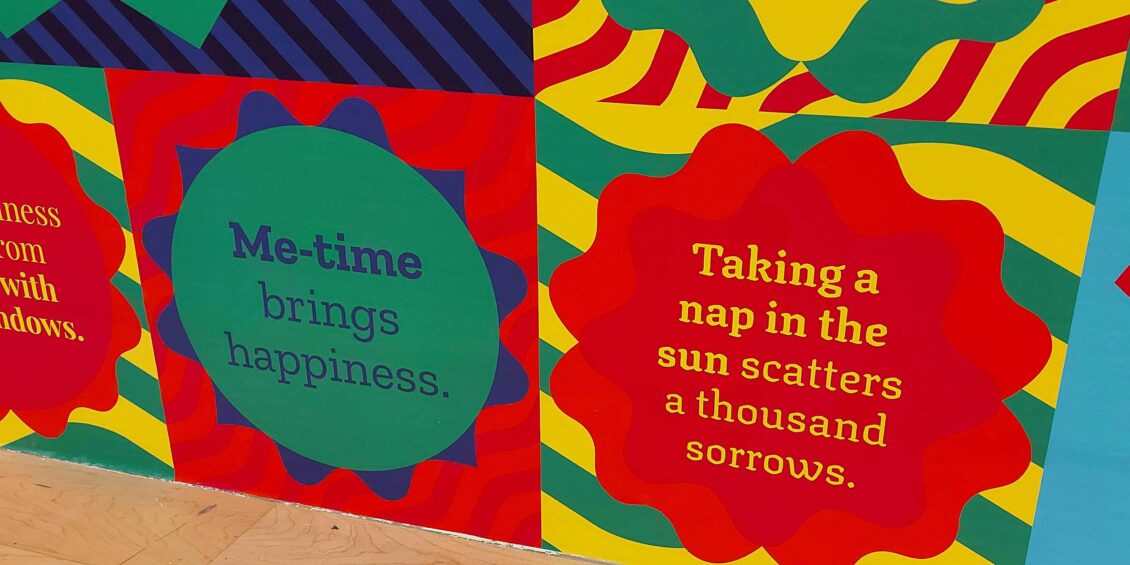
Featured Image: Thought about Joy & Happiness on the wall at Wellcome Collection. Photo: SLRoss
12 Nov 2021
I went to see Joy & Tranquillity at the Wellcome Galleries, not just because I’m obsessed with joy bringing, but because both exhibitions got such lack lustre reviews. How do you do an exhibition about joy and leave so many feeling so unmoved? I simply had to know, if for no other reason than to ensure I did not commit the same mistakes.
Tranquillity
So one Friday a friend accompanied me and we strolled into Tranquillity. The lights were low, some yoga equipment was stacked up in a mound and on a large TV screen some white people who looked like they were from the 60s were running yoga classes. One lady was dressed like an extra from I Dream of Genie, go figure! On an opposing wall, directly opposite the “white yoga” was old footage of what appeared to be a Hindu Swami doing yoga as a religious practice complete with diaphragm modulation (wrong term?), hand stands and more. Staring at the juxtaposition of these two I couldn’t help but think, the Westerners had done it again – taken the action but not the spirit of a thing. (Oh and don’t worry, I’m aware that I too am a Westerner.)
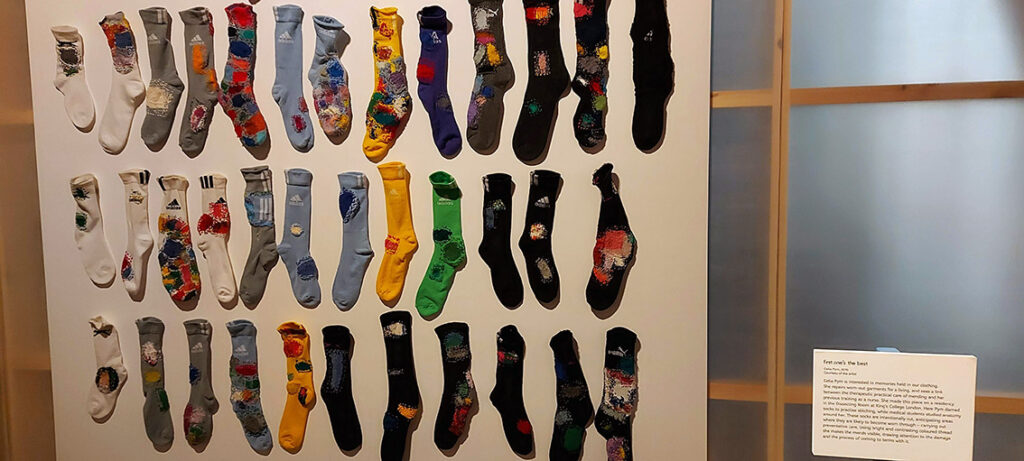
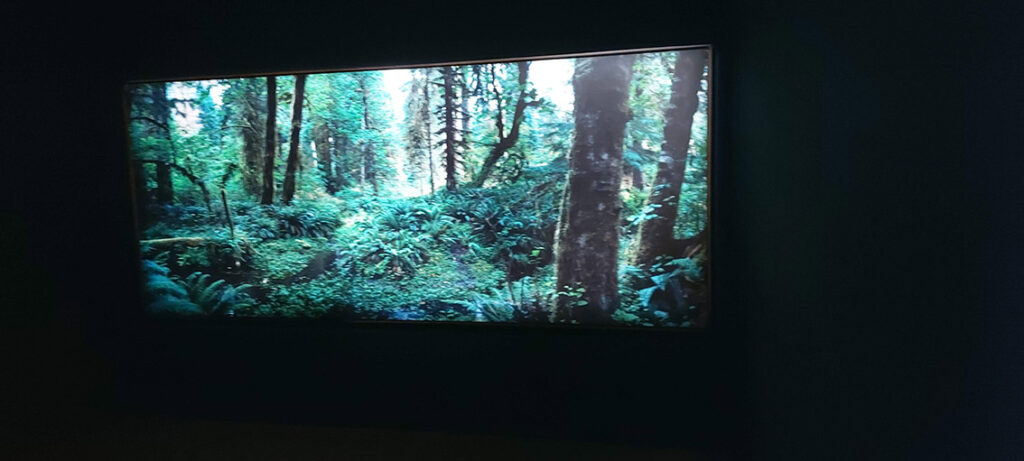
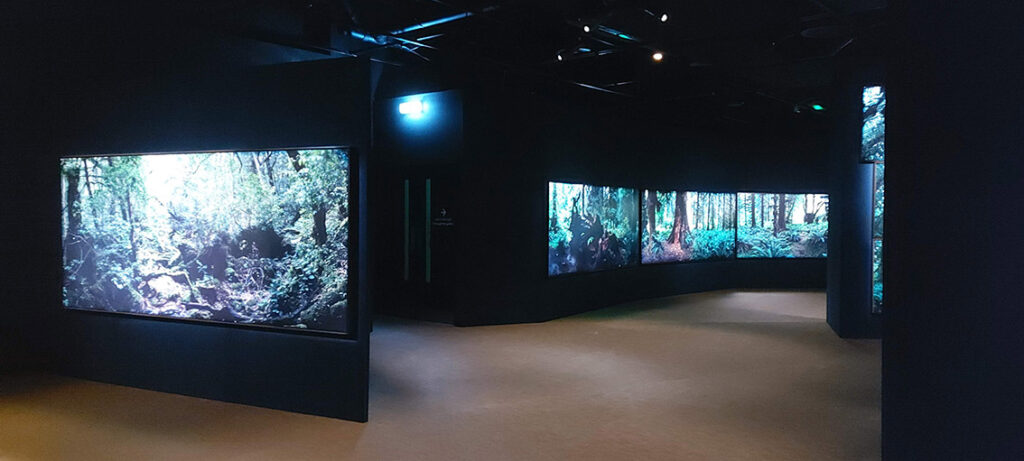
The next room was created using some large wooden frames with some sort of transparent white fabric or plastic pulled over it to create walls. Objects were in glass cases or mounted in tiny frames in front of or along the walls. I am sure these were meaning artefacts about tranquillity historically, but they left me cold. A list of affirmations handwritten by renowned Black sci-fi author Octavia Butler caught my eye amidst a lot of items that didn’t. In the next space, a wall of comfy socks greeted us. We reasoned that the cosy comfort of a good pair of warm socks could possibly bring a sense of contentment, dare we say tranquillity during a cold winter? Upon reading the label we noted that it was about the memories clothes can hold and about the artists (Celia Pym) using the act of darning to create a peaceful headspace for herself during her medical training. Ok, I get it. Up next, a series of photographs of an allotment – a space of joy for the photographer or maybe the owners of the allotment? Then we bent the corner and entered the absolute best part of Tranquillity – a forest! Ok, ok, it wasn’t exactly a forest but it was the most tranquil experience in the entire exhibition.
Chrystel Lebas’ forest was made with massive flat screens lining several black walls in a fairly vast space, showing high resolution images of forests (possibly in The Netherlands?). There was also a soft soundtrack of natural forests sounds, a subtle earthy smell, and even a slightly cooler temperature. We promptly began to imagine how this could be even more ‘tranquil’.
What if each forest image was from a different region yet somehow all the images looked like they could be from the same forest? A symbol of how different yet similar we all are.
What if they lined the ceiling with camouflage netting and let light filter through to create a sun-dappled effect, as if we were really under the trees walking through a forest? The illusion could improve the triggering of memories and feelings of peace amidst the green.
What if, what if, what if…. we went on for ages. This installation was definitely the best part of the Tranquillity exhibition (for us anyway).
We walked out of there feeling curious now. Would Joy have something like the forest for us to experience? We walked up the stairs with high hopes.
Joy
The first image in Joy to catch our attention was a print from an engraving by Timothy Bobbin. It could easily have been inspired by Rowan Atkinson in Black Adder. We scrutinised “Weeping & Joy” and promptly decided to parody it! (Image pictured. Hard to hold a camera steady if you’re laughing too much!)
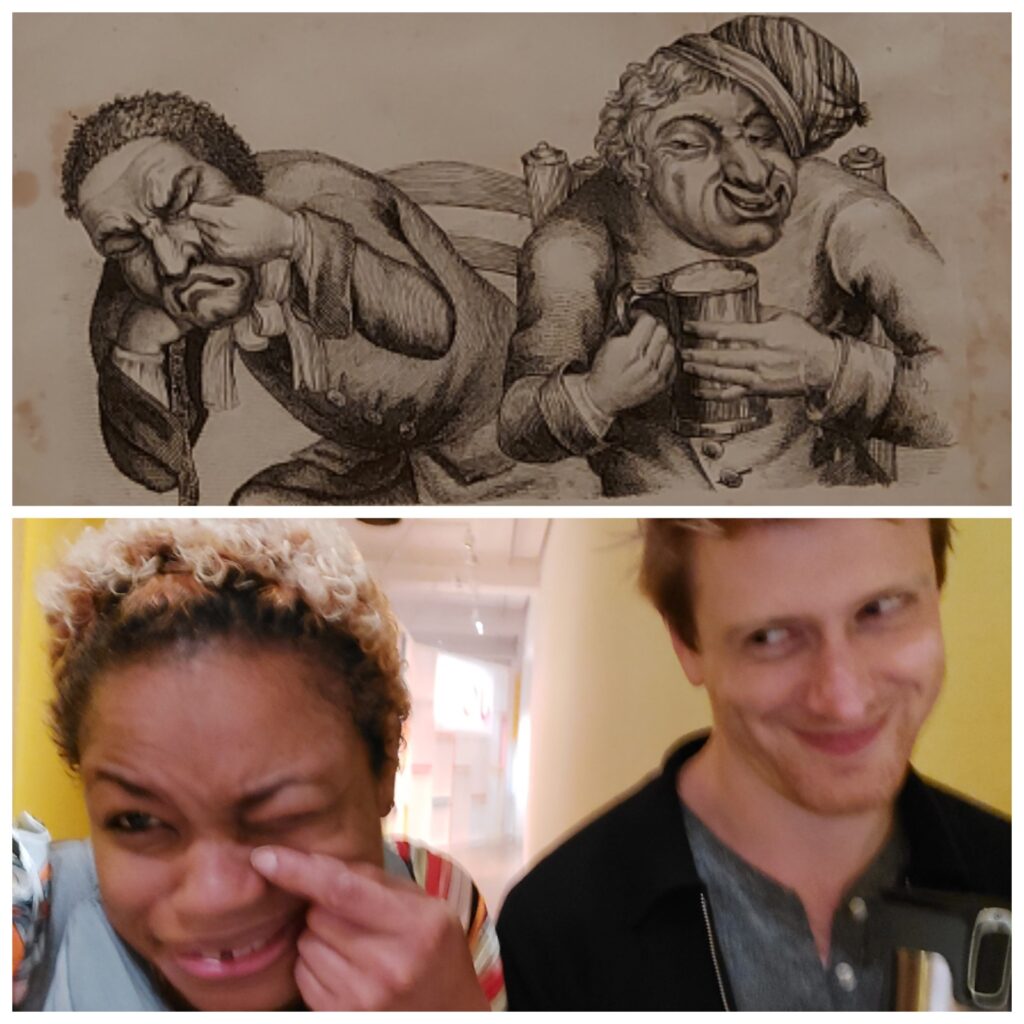
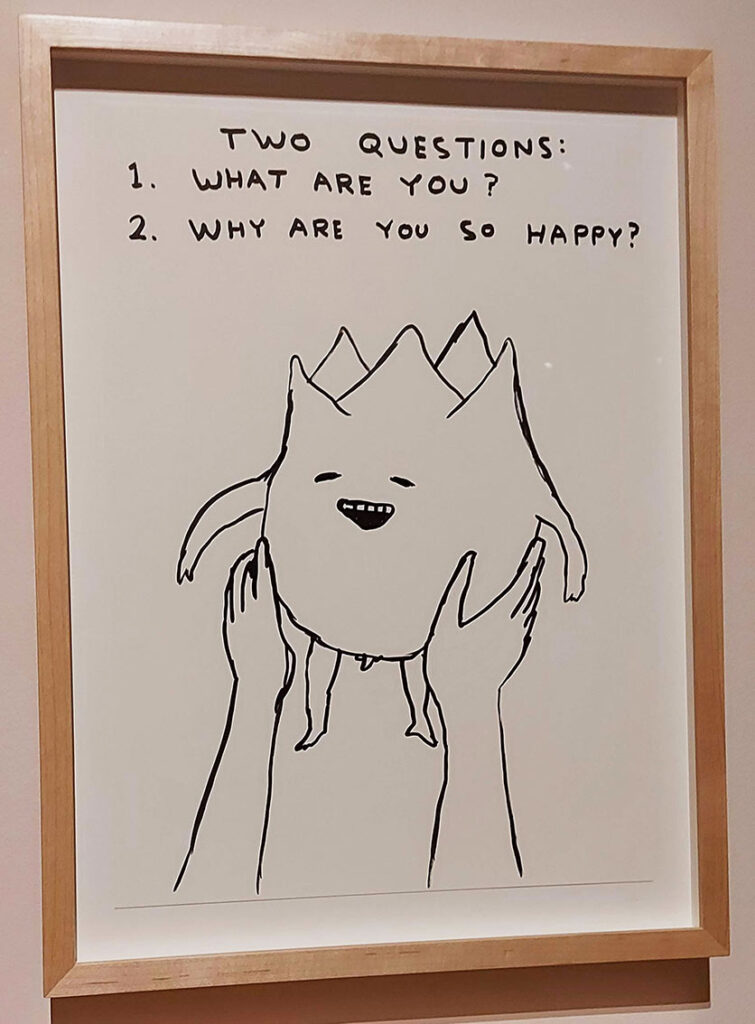
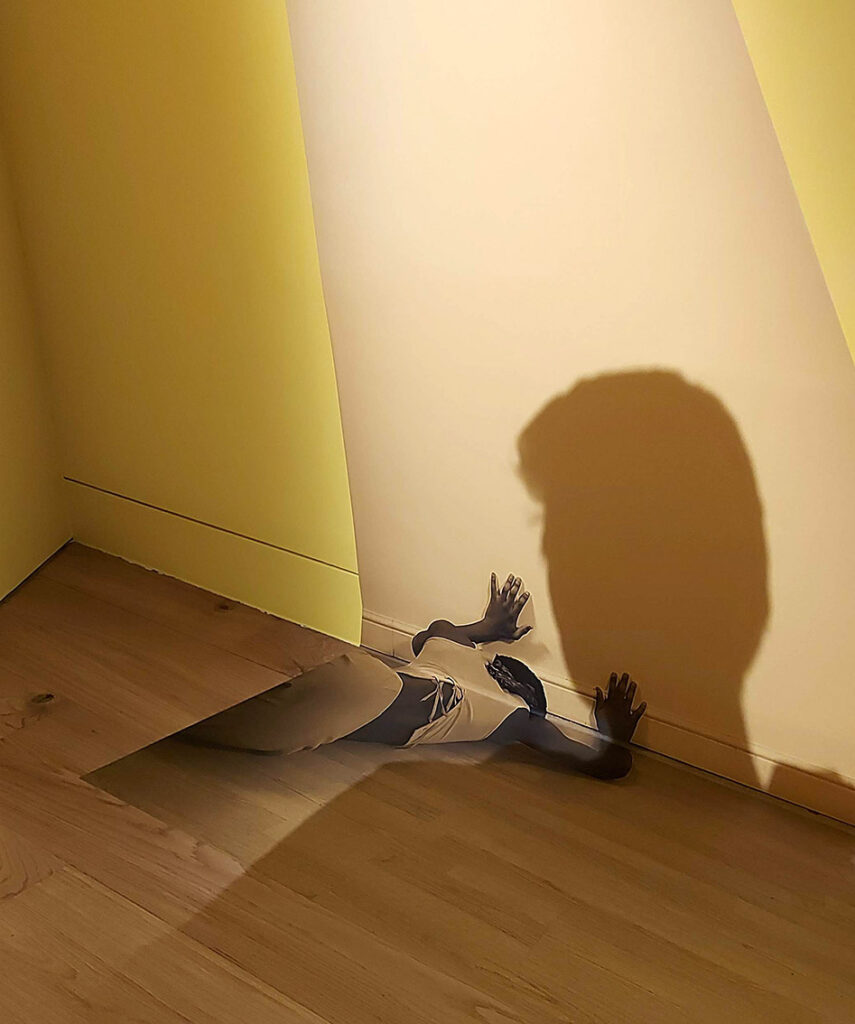
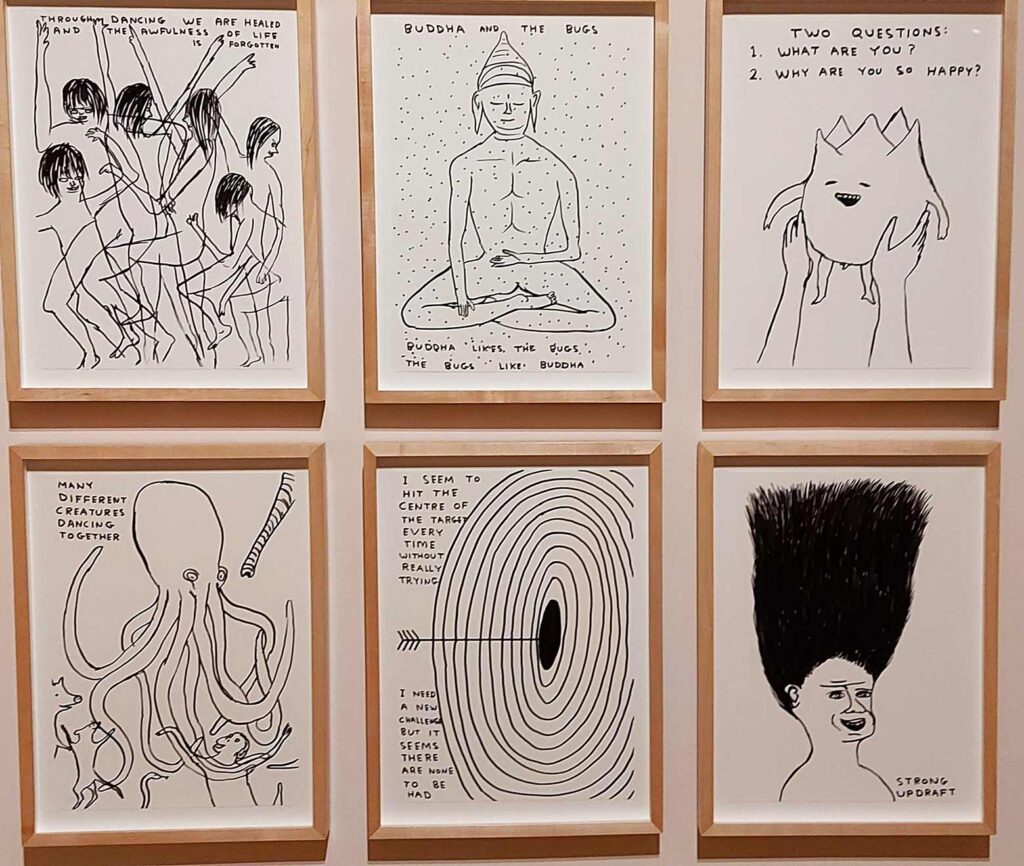
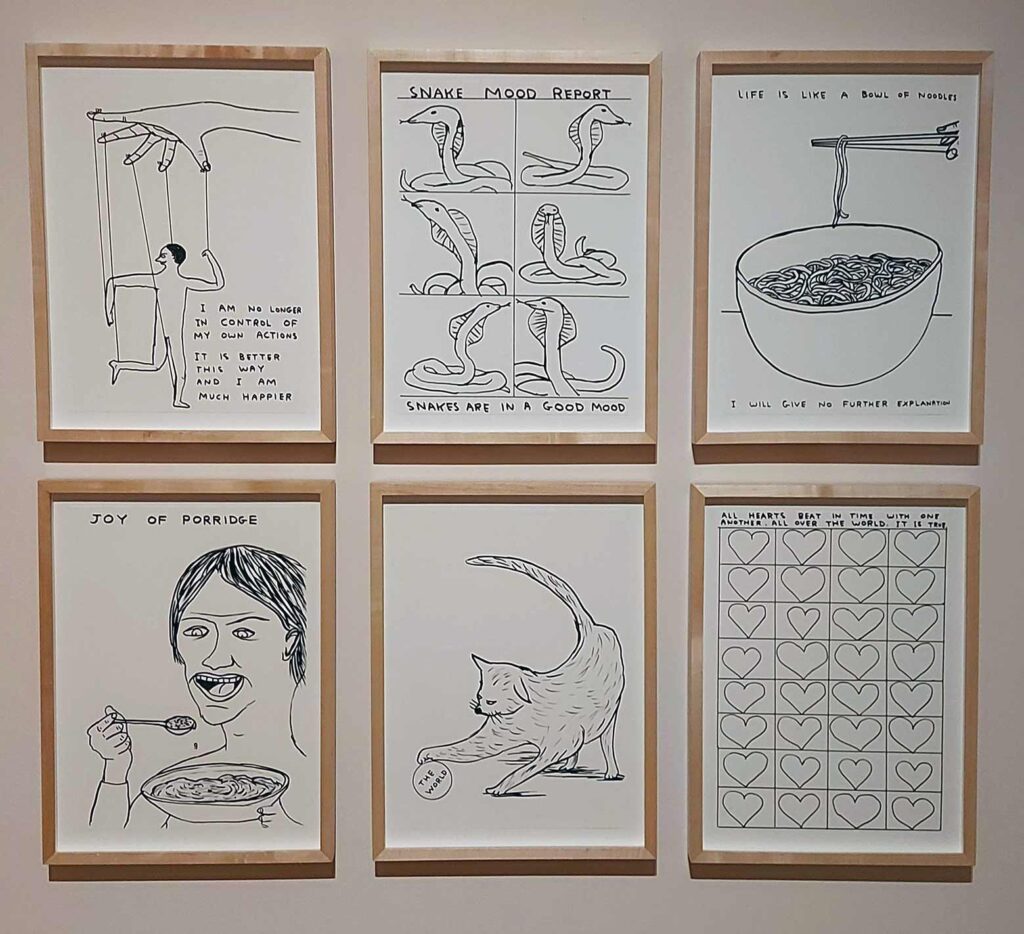
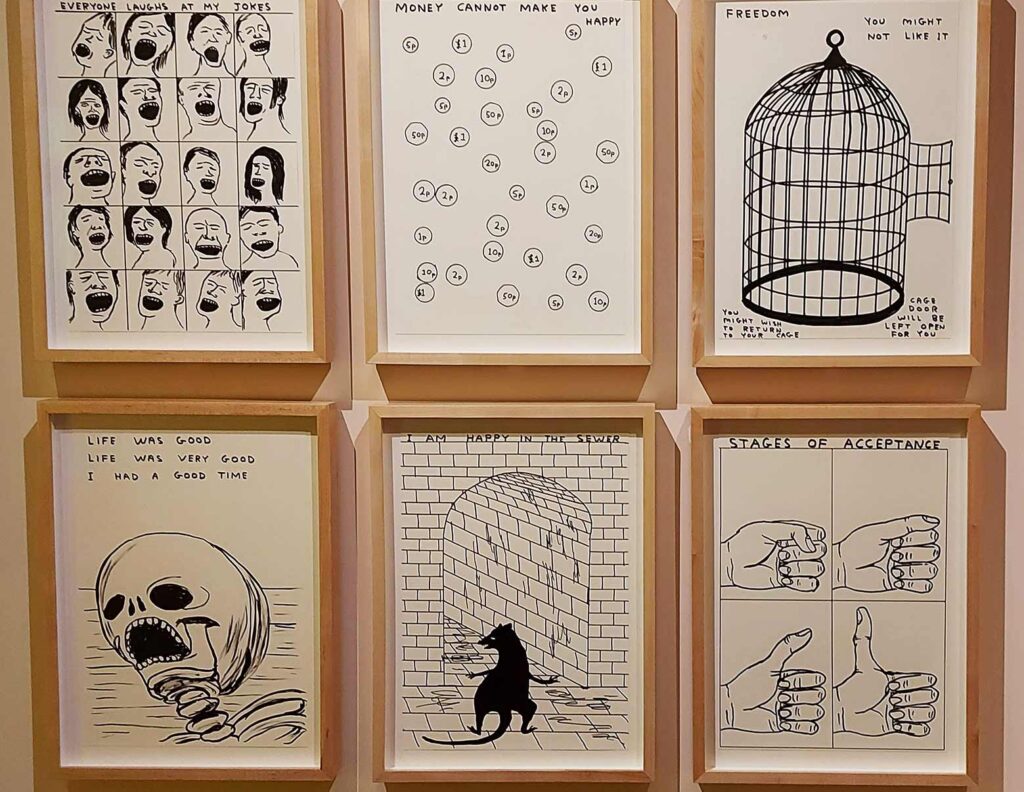
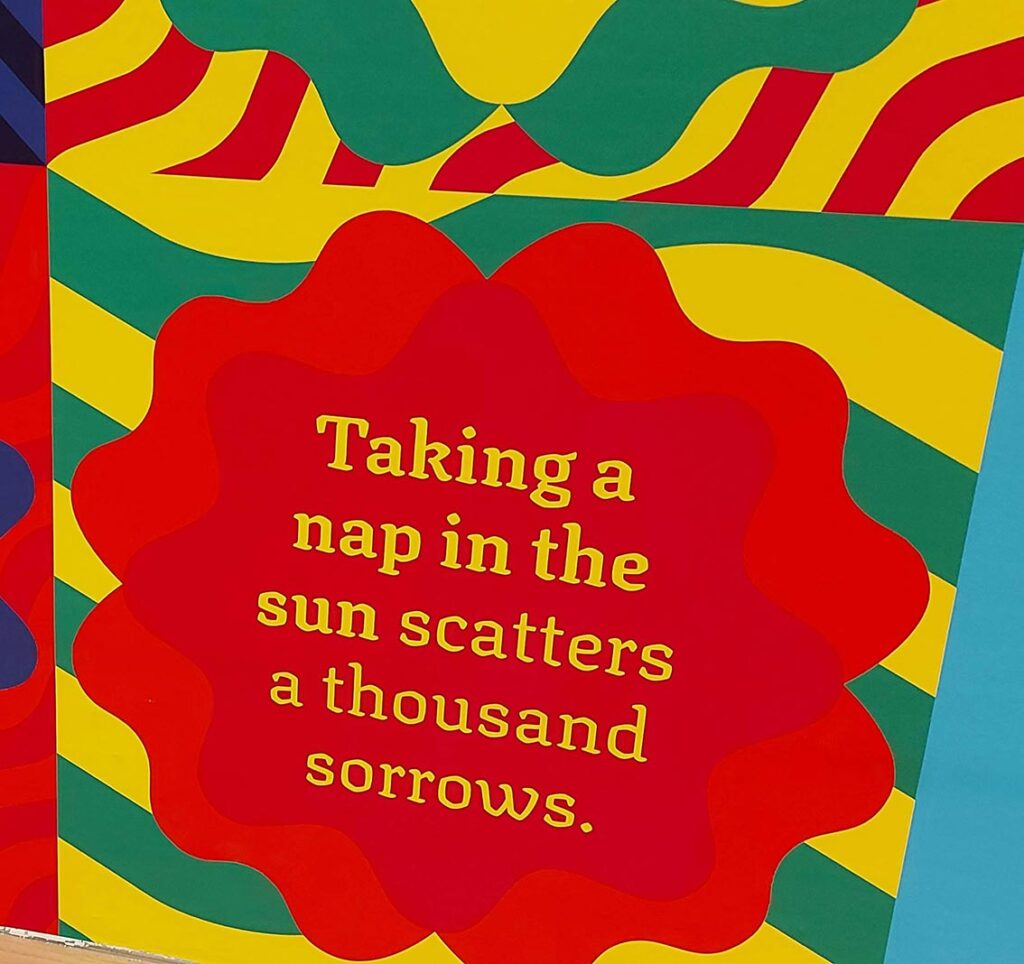
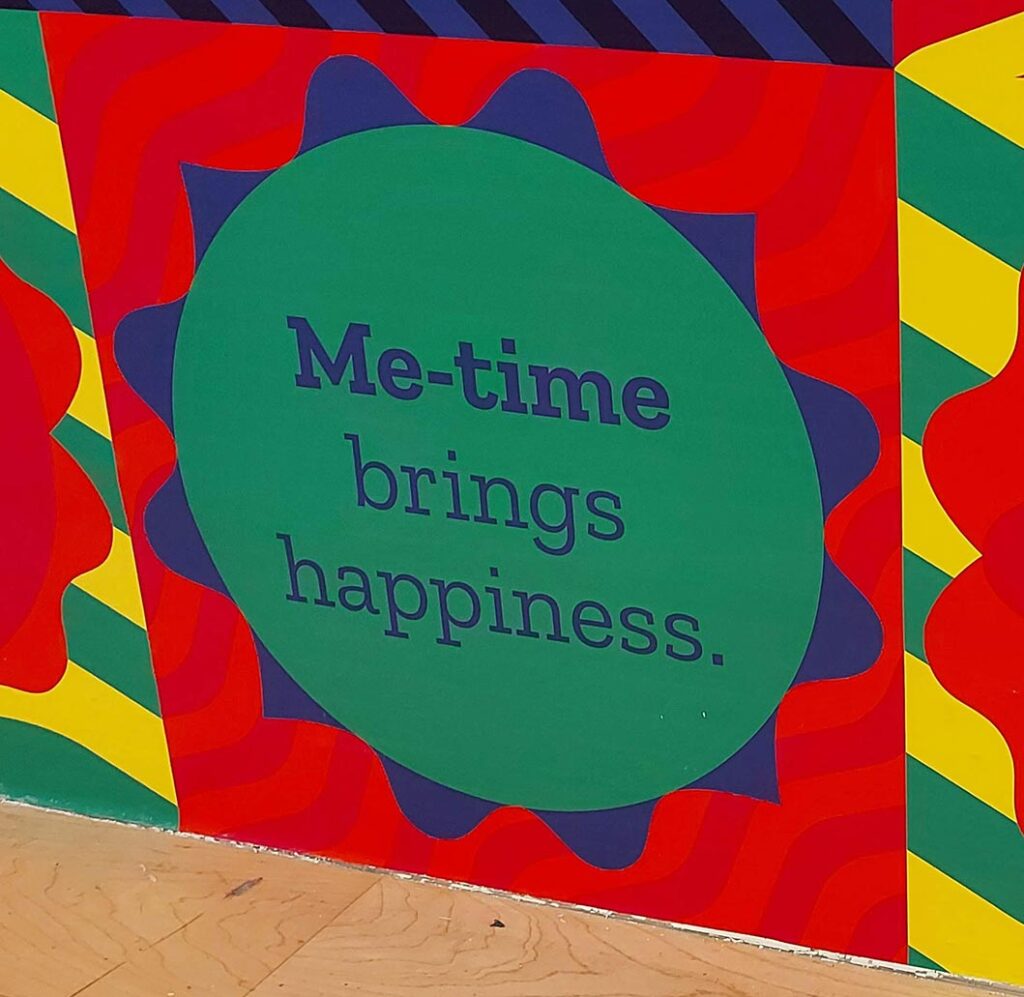
Then we got serious again as we encountered a room full of life-sized dancers in monochromatic but varied outfits, projected on the wall. The dancers were from a mix of ethnicities and genders, their body types were all a bit different, and their moves were equally unique. We studied them for quite a while in the well-lit, relatively bright room and determined that for some there seemed to be discomfort behind the dancing, like a smile to hide a grimace. I really loved the way some very clever photography made it seems as if one character was lying on the floor pushing against the wall.
Reading the labels that reference happiness, pain and Khalil Gibran kicked off quite the discussion about the difference between happiness and joy and whether joy could truly exist without sorrow.
I reasoned that happiness was more fleeting, dependent on external stimuli, and could not usually exist in the midst of any type of sadness. Meanwhile, joy lasted longer, went soul-deep and often did emerge from distress and sorrow. I also wondered whether joy could truly be as meaningful without the juxtaposition of its opposite?
Of course, I now need to go and find sources to back up or refute these assertions.
[12 Dec 2021 – listening to Brené Brown’s Unlocking Us podcast with Karen Walrond, author of The Lightmaker’s Manifesto, I think I have found my starting point! Add another one to the booklist.]
David Shrigley’s Untitled series of drawings was the next big draw for me. These black and white pieces took a light-hearted poke into some deep places. The skull that had a great life – will I be able to say this when I die? The rat who was happy in the sewer – like us when we’re swimming in muck but seem happy to stay there instead of pulling ourselves out. Many creatures dancing together – accepting and loving each other’s differences. So so many drawings with lots to consider and think about. Eventually, I had to pick and choose which ones to focus on and ponder because I was starting to feel over-‘arted’. My absolute favourite of the lot might be “Who are you? Why are you so Happy?” because it reminds me of me. How many times people have looked at me like I’m strange because I laughed really loudly or jumped up and down with excitement at good news? Too many to count!
There were some more smaller pieces in glass cases and mounted on the walls that didn’t really stick in my mind so I proceeded to the next room which was like a large corridor featuring placards and bunting. Reading the label suggested this was supposed to be some approximation of Carnival. Uh-huh.
I will be the first to acknowledge my Carnival snobbery came out in force. As a born and bred Trinbagonian… if you’re going to do Carnival, the Black protest version of Carnival, then you’ve got to come better than some folks smiling as they trot around with some placards. As for the bunting? If ever I needed proof that a performance of Carnival would not create the ‘euphoric oneness’ of Carnival, this was it! Carnival of Compassion will have to go much much deeper than this.
At the exit there were funny squares of experiences (maybe collected from the public?) of things that bring joy and/or happiness and while these were funny to read, I wished there was space for exhibition attendees to join the fun too.
In Summary
| Joy | Tranquillity | |
| Thoughts about The Space | Great organisation of the flow of the audience through the space just by the way the walls and artwork were laid out. A good mix of open spaces and wide corridors to avoid the audience feeling ‘herded’ in a particular direction. As this was set in the Wellcome, I should have kept the scientific in my mind and expected a more rational dissection in their approach to emotions – from a place of study and knowledge more than experience. The warm lighting and wall colours created a cosy, yet light and airy feel | Great organisation of the flow of the audience through the space just by the way the walls and artwork were laid out. A good mix of open spaces and wide corridors to avoid the audience feeling ‘herded’ in a particular direction. As this was set in the Wellcome, I should have kept the scientific in my mind and expected a more rational dissection in their approach to emotions – from a place of study and knowledge more than experience. The dim lighting, with shadowy areas made me instantly wind down and slow down. It was a like a signal to approach the moment between sleep and wakefulness. |
| Thoughts about the Collection | Loved that various pieces raised the issue of joy and sorrow co-existing. There was a lot of David Shrigley to absorb and ponder. I’m not sure scattering them in groups of 8 helped with that overwhelm. Still, many concepts to consider. After seeing the cultural appropriation of yoga in Tranquillity, it was ironic to see the ‘Carnival’ protest at the end of Joy. Maybe I just didn’t understand the work? The problem is that what I did understand of it was not complimentary. I wonder if that was anyone else’s experience? | I like the use of personal stories e.g. the darned socks but there was something not quite right. As if the stories didn’t quite fit the theme maybe? Still not sure what about this didn’t resonate. Maybe I need it to all be experiential? Something to ponder further Good to see an acknowledgement of cultural appropriation in even approached to seeking tranquillity. The Eastern vs Western yoga videos were actually quite jarring to any sense of peace though. Social issues are the things I seek tranquillity to escape. |
| My User Journey Experience | Complete mismatch between expectations and reality, which is likely completely my fault for not reading more about the exhibition in advance. I went expecting to learn about joy through experience, not analysis. I was hoping to use my emotions, not my intellect. I was also hoping to leave the exhibition feeling uplifted, which didn’t happen. At the end, I was more underwhelmed than anything else. | Same as Joy, with the exception of the forest. This came the closest to creating a feeling of tranquillity. |
| Take Away Feelings | Overall – Apathy Mild interest Unmoved Only the David Shrigley’s and that Khalil Gibran plaque really moved me to curiosity and excited chatter. Still, very intellectual discussions | Overall – Apathy Mild interest Unmoved Only Chrystel Lebas’ forest elicited tranquillity, introspection, slowing down, feeling more present, at peace with myself and those around me, easy connection to all life – people, plants, animals… |
| Take Away Thoughts | A collection of philosophical stimuli more than an experience. I felt like Wellcome was showing and talking AT me. This was a presentation, not a discourse. | A collection of philosophical stimuli more than an experience. I felt like Wellcome was showing and talking AT me. This was a presentation, not a discourse. |
Stacey Leigh Ross attended Joy & Tranquillity on 12th November 2021. All photos shown were taken by SLRoss.
References
Walrond, K. (2021) “Brené and Karen Walrond on The Lightmaker’s Manifesto, Part 1 of 2,” Brené Brown. Brené Brown LLC. Available at: https://brenebrown.com/podcast/the-lightmakers-manifesto-part-1-of-2/ (Accessed: December 12, 2021).
